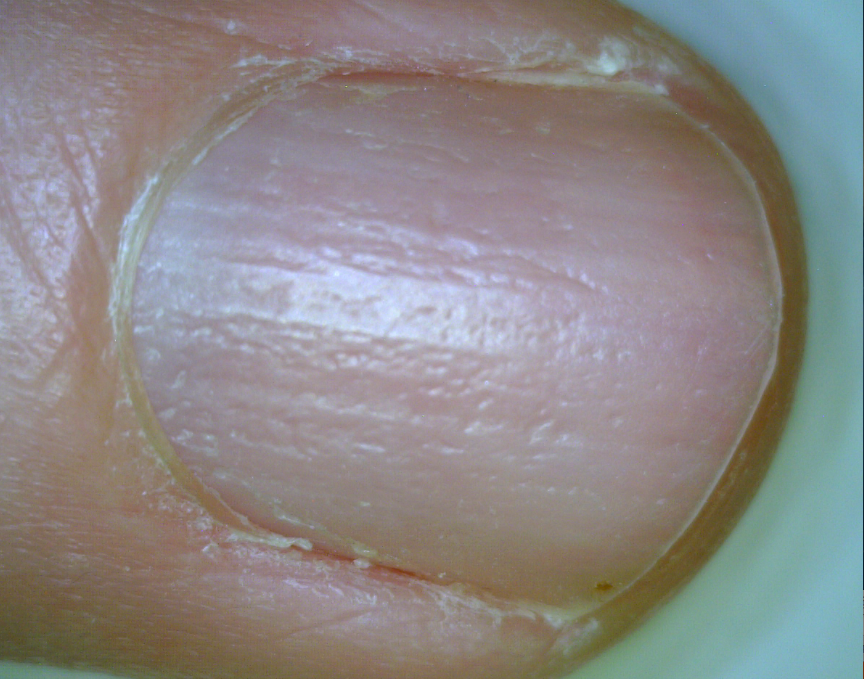Nail Pitting in Individuals with Alopecia Areata
Nail Pitting in Individuals with Alopecia
Most patients with hair loss who come to see me are surprised when I examine their nails. But it should come as no surprise because hair and nails are closely related. The proteins found in the nails are also found in the nails! In fact, I tell my patients that hair and nails are like cousins.
Nail Pitting in Alopecia Areata
For example, 10 to 40 % of individuals with the hair loss condition "alopecia areata" develop small holes in the nails that we call 'pitting.' A picture of nail pitting is shown in the photo on the right. Individuals who have pitting usually have a more stubborn form of alopecia that is much more challenging to treat. Believe it or not, there are yet another 10 nail changes that can occur in individuals with alopecia areata; nail pitting however is the most common. Pitting is also seen in other conditions as well (including conditions known as eczema and psoriasis) - so simply having pitting in the nails doesn't mean you have alopecia areata.
The Importance of Examing the Nails
Nails are important for all hair physicians to examine. Sometimes I glance at them when meeting a patient, sometimes I look at them quickly, sometimes I spend 2-3 mintues looking at them. But one things is for certain - the examination of the nails shouldn't be ignored. Readers may recall a blog I wrote back in early 2011.
Take for example the young man who came to see me for a hair transplant. He was convinced he had male balding and so were his family, friends and even other doctors. He had a bit of itching in the scalp and had been losing his hair fairly quickly. His hair loss bothered him tremendously and he wanted me to transplant him. But by examining his nails, I quickly learned that he had pits in the nails. A small scalp biopsy done that same day showed that the man didn't have male pattern balding but rather alopecia areata. If I were to transplant him - he would not have grown any hair. (Alopecia areata is one hair loss condition that can not be transplanted - see previous blog).
Nail changes occur in many hair conditions. If we are hoping to learn as much as we can about a patient's hair loss, then the opportunity to examine the nails should not be missed.
This article was written by Dr. Jeff Donovan, a Canadian and US board certified dermatologist specializing exclusively in hair loss.

